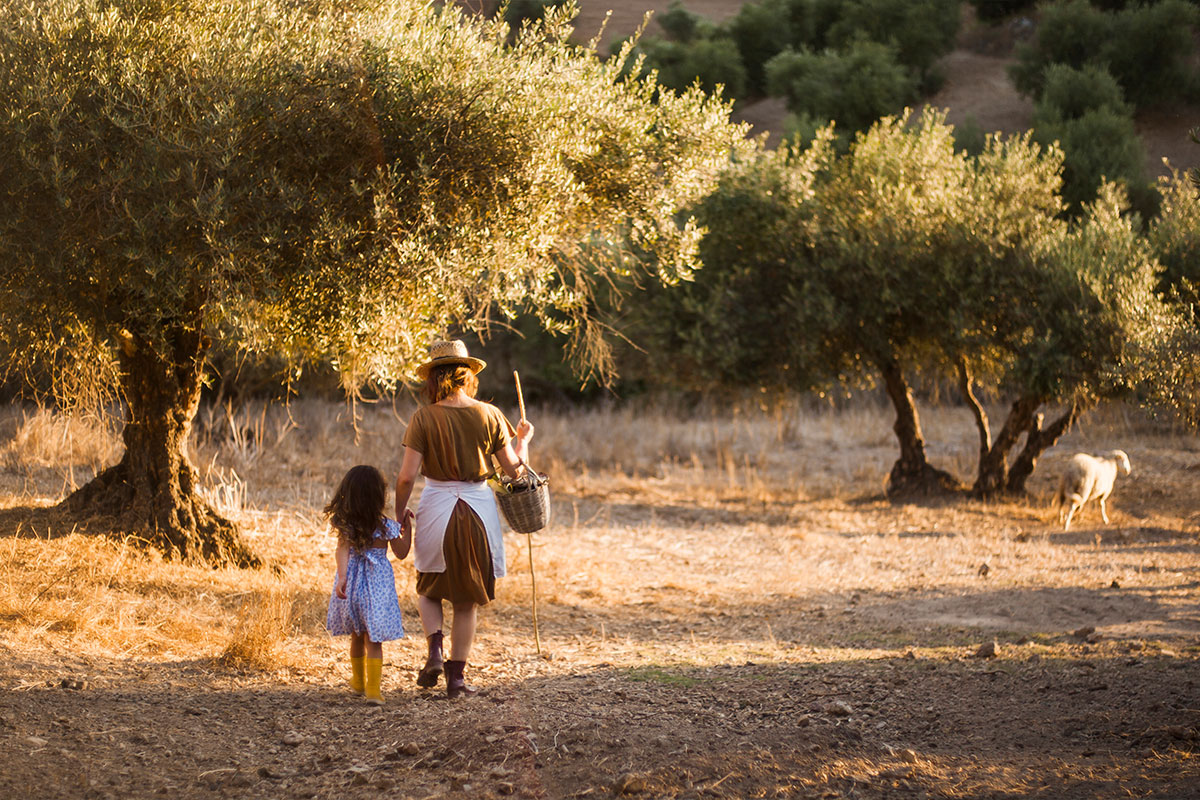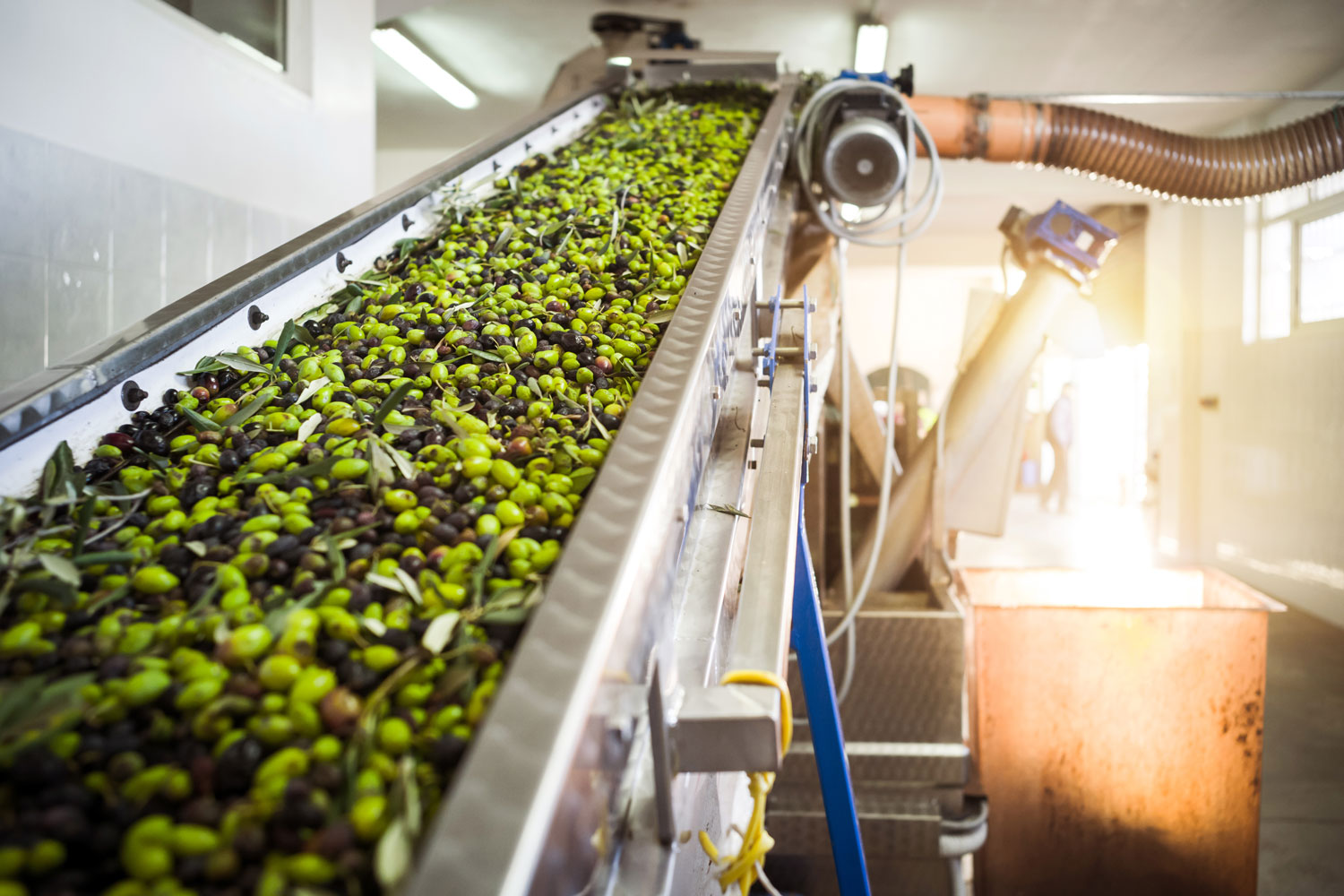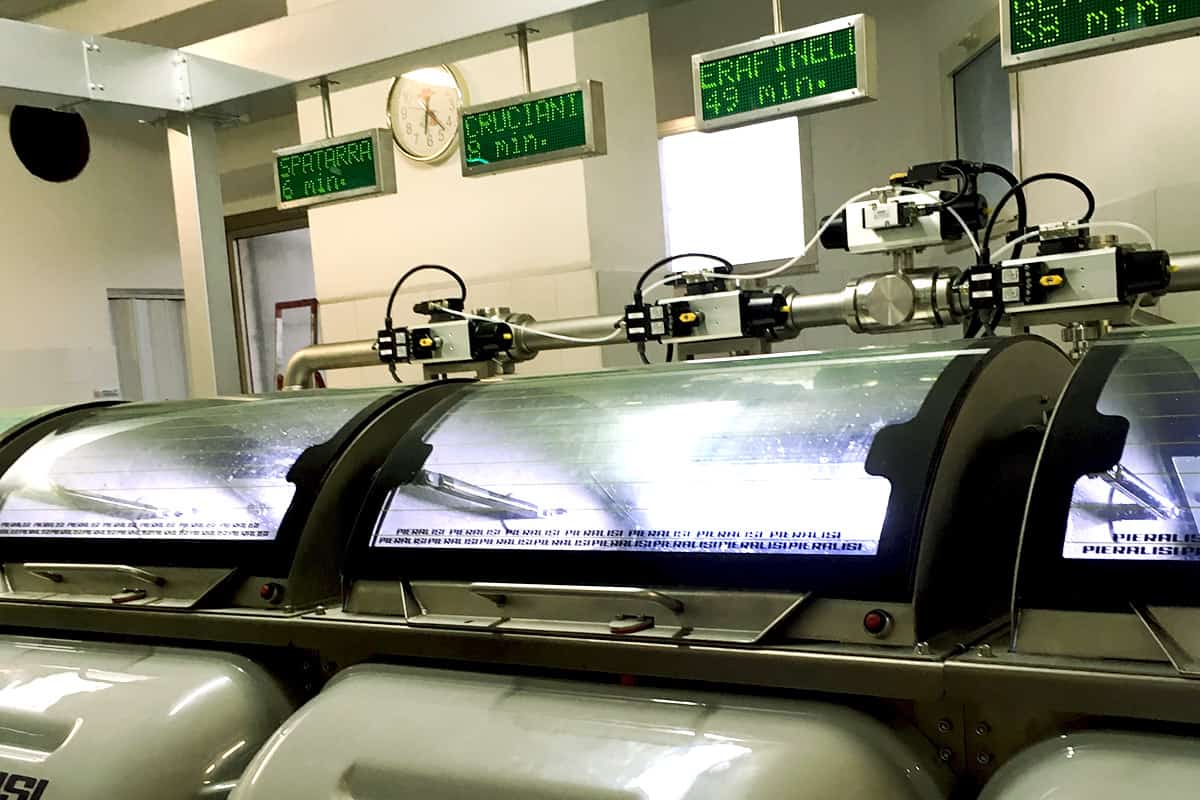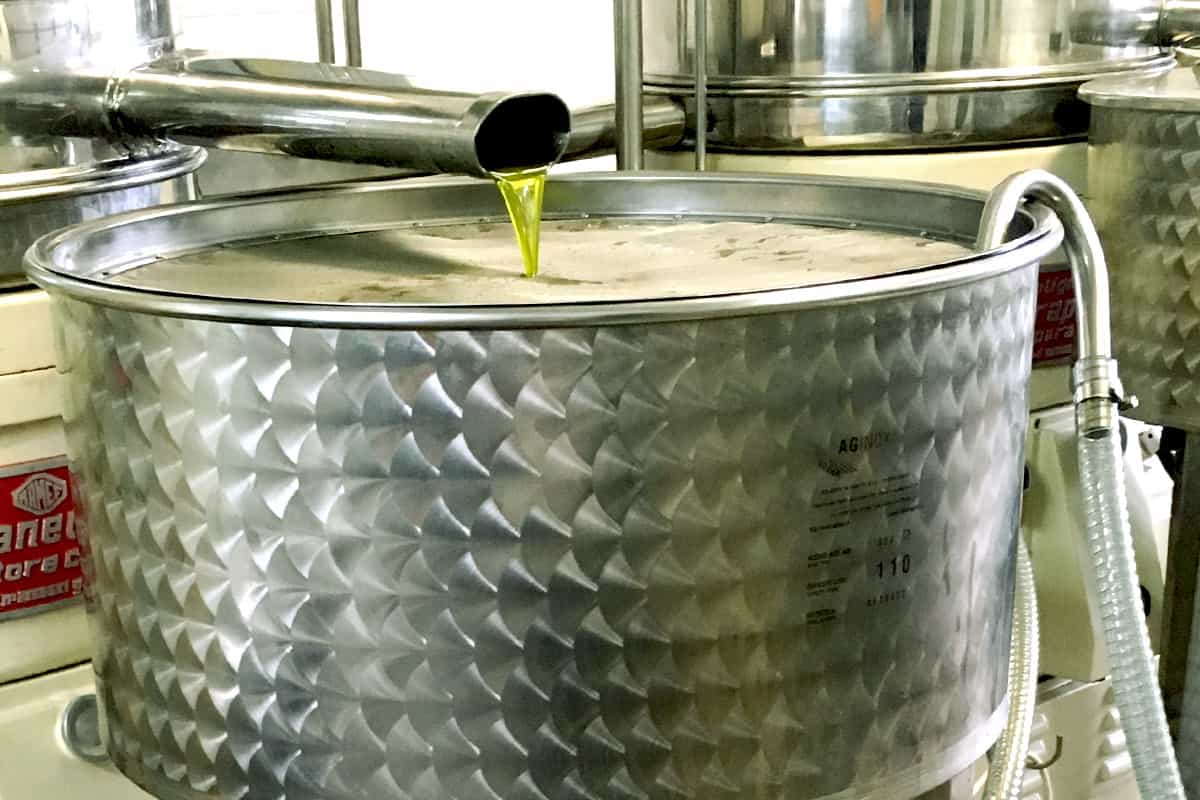The production of our olive oil explained step by step.
How the best hand-picked olives are processed into our extra virgin olive oil.

1. Picking
From the end of September, we start an exciting, but busy time. The olive harvest begins. The olives are almost ripe and can be picked or shaken from the trees. The degree of ripeness of the olives determines the intensity of the oil: the more unripe and greener, the spicier the oil. For this reason, some of the olives are harvested later, then the olives are riper and darker and are the basis for our DesOlive mild. To preserve all the valuable ingredients of the olives, we deliver them to the oil mill within 24 hours after they have been picked for further pressing.

2. Washing
The olives are transferred to the oil mill in special olive crates, where they are weighed and marked with the name of the olive farmer so that no confusion or mixing of the harvest can take place. In turn the olives are poured into a large funnel (the hopper) and shaken and separated from leaves using a conveyor screw and an air blower then they are washed to remove soil, dust, and other adherents.

3. Cutting and cold pressing
After washing, the olives pass through a cutting and grinding machine, which processes them into a pulpy mass (mash). This gentle, purely mechanical process is known as cold pressing, one of the most important steps of the whole production process. Our olive oil is pressed without any heat input from an external source and without heat generation during the whole process. In this way the aroma and ingredients of the fruits are preserved, and an olive oil of the highest quality is produced.

4. Stirring and kneading
The mash is then evenly stirred and kneaded for half an hour at low temperature (about 25-27° C). Oil microparticles combine with each other and the mass becomes more homogeneous.

5. Centrifugation
The mash is then transferred to the decanter which is the heart of the oil mill and is separated by horizontal centrifugation into solids and liquids (olive pits, pulp and must). The liquid is then vertically centrifuged to obtain the actual olive oil. The entire process takes place in a closed system to prevent the evaporation and leakage of valuable substances such as polyphenols and aromas.

6. Decanting
In the last phase of the production process our olive oil is stored in a steel tank for about ten days for decanting. During this process suspended particles settle at the bottom of the tank and it is easy to filter them out.

7. Bottling
The olive oil is then filled into special airtight containers which protect the oil from light. Once it is stored at room temperature, it can be kept for at least 24 months.

8. Enjoy
This is the moment we wait for all year round, to savor the new harvest, to taste the complex aromas and the unique character of the olive oil that nature has produced this season.



 100% Premium quality
100% Premium quality
 100% Enjoyment or "money back"
100% Enjoyment or "money back"
 Fast delivery
Fast delivery
 Personal advice on request
Personal advice on request

 100% from Italy - cultivated, pressed & bottled in Tuscany (Lazio)
100% from Italy - cultivated, pressed & bottled in Tuscany (Lazio)